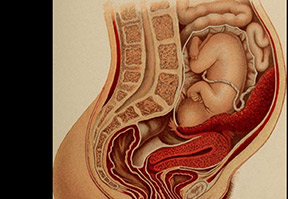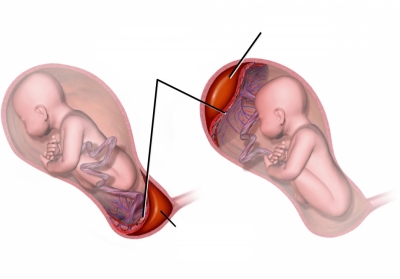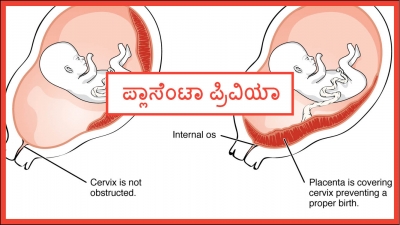it is known as placenta previa and when attached to the front it is called anterior placenta. The position of the placenta is usually diagnosed during an ultrasound.
Though anterior placenta is not a major problem, it can be a little difficult during pregnancy for a couple of things -
1. As the placenta is attached to the anterior wall of the uterus, it lies between the baby and the abdominal wall, so it may be that much harder to hear the baby’s heartbeat using a fetoscope
which is usually used after 18 weeks to hear the baby’s heartbeat.
2. Some women with anterior placenta may feel the baby’s kicks a little later than the women with the posterior placenta, for the same reason that, the placenta lies between baby and the abdominal wall.
3. Most of the time, having an anterior placenta will have no effect on your delivery. However, if the anterior placenta is accompanied by babies in occipital posterior (OP) positioning,
meaning baby’s face is pointed toward mother’s front instead of toward her back, called occipital anterior (OA). This could cause a prolonged labor and sometimes lead to a C-section.
4. Sometimes the anterior placenta can begin to grow towards the cervix and may become a placenta previa ( Low down placenta). This can cause bleeding and premature labour.
5. There is a possibility that a placenta which was anterior initially, as the uterus grows may move up to the upper part of the uterus, but the possibility of it becoming posterior is remote.
So most of the time, the anterior placenta should not be a problem but discuss with your doctor about what are the possibilities and always be positive and stay happy during pregnancy. Don’t worry too much and stress yourself. Stress can trigger premature labor.
[quix id='8' name='About our Pregnancy Blogs and Videos']






